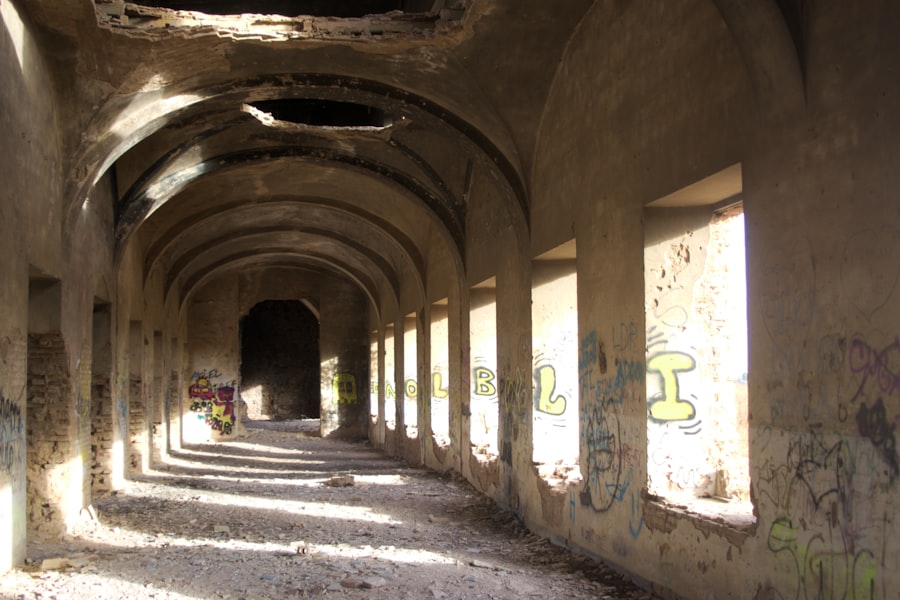Deep Underground Military Bases (DUMBs) have long been a subject of intrigue and speculation. These facilities, often shrouded in secrecy, are designed to serve various military purposes, including command and control, storage of weapons, and even research and development of advanced technologies. The very existence of DUMBs raises questions about national security, military strategy, and the extent to which governments operate beyond public scrutiny.
As nations grapple with evolving threats, the need for secure and discreet military installations has become increasingly apparent, leading to the construction of these subterranean fortresses. The allure of DUMBs lies not only in their strategic significance but also in the mysteries that surround them. Many believe that these bases are equipped with cutting-edge technology and serve as hubs for clandestine operations.
The public’s fascination with DUMBs is fueled by a combination of historical events, military advancements, and the ever-present fear of global conflict. As the world continues to change, understanding the role and implications of DUMBs becomes essential for grasping the complexities of modern warfare and national defense.
Key Takeaways
- Deep Underground Military Bases (DUMBs) are secretive military facilities built deep underground for strategic purposes.
- Alaska has a long history of hosting DUMBs, dating back to the Cold War era.
- The strategic importance of Alaska’s DUMBs lies in their proximity to potential conflict zones and their ability to provide secure command and control facilities.
- The construction and design of Alaska’s DUMBs involve advanced engineering and technology to ensure their security and functionality.
- DUMBs play a crucial role in national security by providing a secure location for military operations and safeguarding critical infrastructure.
The History of DUMBs in Alaska
Alaska’s history with DUMBs is both rich and complex, reflecting the state’s unique geographical and strategic position. The construction of these underground facilities began during the Cold War, a period marked by heightened tensions between superpowers. The U.S. government recognized Alaska’s proximity to Russia as a critical factor in its defense strategy, leading to the establishment of several military installations designed to counter potential threats. Over the decades, these bases evolved into sophisticated underground complexes capable of housing advanced military operations. The development of DUMBs in Alaska was not merely a reaction to external threats; it also stemmed from the need for secure locations to conduct sensitive research and development. As technology advanced, so did the capabilities of these underground facilities. They became essential for testing new weapons systems and conducting experiments that required isolation from prying eyes. The historical context of DUMBs in Alaska illustrates how military strategy has adapted to changing geopolitical landscapes while also highlighting the state’s pivotal role in national defense.
The Strategic Importance of Alaska’s DUMBs

Alaska’s DUMBs hold significant strategic importance due to their geographical location and the unique challenges posed by the Arctic environment. Situated at the northernmost point of North America, Alaska serves as a critical vantage point for monitoring activities in both the Pacific and Arctic regions. The presence of DUMBs allows for rapid response capabilities in the event of a military crisis, ensuring that U.S.
forces can act swiftly and decisively.
Moreover, Alaska’s DUMBs are integral to the United States’ broader defense strategy against potential adversaries.
As tensions rise in global hotspots, the ability to maintain a strong military presence in Alaska becomes increasingly vital. These bases not only serve as operational hubs but also as deterrents against aggression from rival nations. The strategic importance of Alaska’s DUMBs underscores the necessity for continued investment in military infrastructure to safeguard national interests in an ever-evolving security landscape.
The Construction and Design of Alaska’s DUMBs
| Aspect | Details |
|---|---|
| Location | Alaska |
| Construction | Underground |
| Design | Secure and insulated |
| Purpose | Protection from extreme weather and security threats |
| Size | Varies based on specific DUMB |
The construction and design of Alaska’s DUMBs reflect a blend of advanced engineering techniques and military requirements. Building underground facilities in such a challenging environment necessitates innovative approaches to ensure structural integrity and operational efficiency. Engineers must consider factors such as geological stability, temperature fluctuations, and potential seismic activity when designing these bases.
The result is a network of tunnels and chambers that can withstand external pressures while providing a secure environment for military personnel and equipment. In addition to structural considerations, the design of DUMBs incorporates cutting-edge technology to facilitate communication, surveillance, and defense operations. These facilities are often equipped with state-of-the-art systems that allow for real-time data analysis and decision-making.
The integration of advanced technologies ensures that Alaska’s DUMBs remain at the forefront of military capabilities, enabling them to adapt to emerging threats and challenges. The meticulous planning and execution involved in constructing these bases highlight the commitment to maintaining national security in an increasingly complex world.
The Role of DUMBs in National Security
DUMBs play a crucial role in national security by providing secure locations for military operations and strategic planning. These underground facilities serve as command centers during crises, allowing military leaders to coordinate responses without fear of detection or interference. The ability to operate from a concealed location enhances the effectiveness of military strategies, ensuring that U.S.
forces can respond swiftly to threats both domestically and internationally. Furthermore, DUMBs contribute to intelligence gathering and analysis, enabling military personnel to monitor potential adversaries’ activities discreetly. The information collected from these bases can inform decision-making at the highest levels of government, shaping national security policies and strategies.
As global tensions continue to rise, the importance of DUMBs in safeguarding national interests cannot be overstated; they represent a vital component of a comprehensive defense strategy designed to protect citizens and maintain stability.
The Environmental Impact of DUMBs in Alaska

While DUMBs serve critical military functions, their construction and operation raise important environmental concerns. Alaska’s pristine wilderness is home to diverse ecosystems that can be adversely affected by underground military activities. The excavation required for building these bases can disrupt local habitats, leading to potential long-term consequences for wildlife populations.
Additionally, the use of heavy machinery and construction materials poses risks to soil and water quality in surrounding areas. Efforts have been made to mitigate these environmental impacts through careful planning and adherence to regulations. Military authorities often conduct environmental assessments before initiating construction projects to identify potential risks and develop strategies for minimizing harm.
However, the balance between national security needs and environmental preservation remains a contentious issue. As awareness of environmental issues grows, it becomes increasingly important for military planners to consider sustainable practices when developing DUMBs in Alaska.
The Economic Impact of DUMBs in Alaska
The presence of DUMBs in Alaska has significant economic implications for local communities and the state as a whole. These underground facilities create jobs during both construction and ongoing operations, providing employment opportunities for residents in an otherwise remote region. The influx of military personnel can also stimulate local economies by increasing demand for goods and services, benefiting businesses in nearby towns.
However, the economic impact is not solely positive; there are also concerns about dependency on military spending. Communities that rely heavily on DUMBs may face challenges if funding is reduced or if military priorities shift. Additionally, the secrecy surrounding these installations can limit transparency regarding their economic contributions, making it difficult for local leaders to plan for future growth effectively.
Balancing the economic benefits with potential vulnerabilities is essential for ensuring sustainable development in areas surrounding Alaska’s DUMBs.
The Connection Between DUMBs and Conspiracy Theories
The existence of DUMBs has fueled numerous conspiracy theories over the years, often portraying them as sites for nefarious activities or secret government agendas. Some theorists speculate that these underground bases house extraterrestrial technology or serve as shelters for elites in the event of a global catastrophe. Such narratives thrive on public fascination with secrecy and distrust toward government institutions, leading many to question what truly occurs within these hidden facilities.
While some conspiracy theories may lack credible evidence, they highlight broader societal concerns about transparency and accountability in government operations. The secretive nature of DUMBs can breed suspicion among citizens who feel excluded from discussions about national security policies that directly impact their lives. Addressing these concerns requires open communication from government officials about the purpose and activities associated with DUMBs while also acknowledging public apprehensions regarding secrecy.
The Future of DUMBs in Alaska
As geopolitical dynamics continue to evolve, the future of DUMBs in Alaska remains uncertain yet critical. With emerging threats such as cyber warfare and climate change impacting national security strategies, there may be a need for further investment in underground facilities that can adapt to new challenges. This could involve upgrading existing bases or constructing new ones designed specifically for modern warfare scenarios.
Moreover, advancements in technology may influence how DUMBs are utilized moving forward. Innovations such as artificial intelligence and automation could enhance operational efficiency within these facilities while also reducing human risk during high-stakes missions. As military planners assess future needs, it will be essential to consider not only technological advancements but also environmental sustainability and community engagement when developing plans for Alaska’s DUMBs.
The Relationship Between DUMBs and Indigenous Communities in Alaska
The presence of DUMBs in Alaska intersects with the lives of Indigenous communities who have inhabited these lands for generations.
Concerns about land use, environmental degradation, and cultural preservation often arise when discussing the impact of DUMBs on Indigenous communities.
Efforts have been made to engage Indigenous leaders in discussions about military operations in their regions; however, challenges remain regarding representation and decision-making power. Building meaningful relationships between military authorities and Indigenous communities is crucial for fostering mutual understanding and respect while addressing concerns related to land rights and environmental stewardship. A collaborative approach can help ensure that both national security needs and Indigenous rights are upheld.
Uncovering the Truth About Alaska’s DUMBs
The exploration of Deep Underground Military Bases (DUMBs) in Alaska reveals a complex interplay between national security interests, environmental considerations, economic impacts, conspiracy theories, and Indigenous rights. While these facilities serve vital roles in safeguarding national interests, they also raise important questions about transparency, accountability, and community engagement. As society grapples with evolving threats and challenges, understanding the multifaceted nature of DUMBs becomes essential for fostering informed discussions about their future.
Ultimately, uncovering the truth about Alaska’s DUMBs requires a commitment to open dialogue among stakeholders—military officials, local communities, environmental advocates, and Indigenous leaders alike. By addressing concerns collaboratively while recognizing the strategic importance of these installations, it is possible to navigate the complexities surrounding DUMBs responsibly. In doing so, society can work toward a future where national security needs align with environmental sustainability and respect for Indigenous rights—ensuring that all voices are heard in shaping policies that impact their lives.
Deep underground military bases in Alaska have long been a topic of intrigue and speculation, often linked to various conspiracy theories and government secrecy. For those interested in exploring this subject further, a related article can be found on XFile Findings, which delves into the mysteries surrounding these installations and their potential purposes. You can read more about it in this article.
WATCH THIS! 16,000 Vanished: The Deadly Secret of Alaska’s Dark Pyramid
